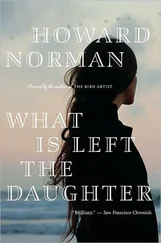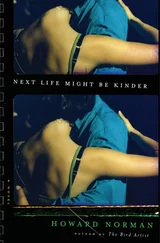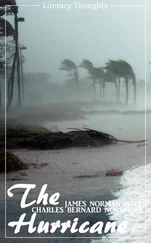Perhaps most predictably, literary ambulance chasers — not prone to studied considerations that should better take years — had all sorts of insights about Reetika Vazirani’s lines and stanzas, some of whom suggesting that, when closely deciphered, what would come to light was that her writing all along had exhibited, as one correspondent put it, a “posthumous aspect,” as if it consisted of predated keenings from the afterlife. However, no poetry is written posthumously; it is only published so, and to suggest that she had clairvoyant powers is as mindless as saying, mistakenly, suicide-murder. No, Reetika Vazirani haunted her own writing in real time; she was no ghost at the typewriter, but held pen in living hand.
A number of crazies came out of the woodwork. For example, there was the woman who, in a telephone call, claimed she was representing the British Sylvia Plath Society and wanted to “drop by for a little chat.” In another phone call, the leader of a Hindu prayer circle inquired about the possibility of holding its monthly meeting in our house. A doctoral candidate at a college in New York — again on the telephone — said that her thesis was on “creativity and suicide,” and asked if she could take photographs of our dining room and, in addition, might we provide photographs “from, you know, before. Just so I can have a mode of comparison.” A minor performance artist from Southern California sent an invitation to attend a performance of Medea in which she somehow played all the parts. And then there was the time I picked up the telephone and heard a woman say, “Hello, I’m a teacher and scholar from Pakistan. And I’m writing about what V. S. Naipaul called “forensic memoir.” I immediately hung up. What could she possibly have wanted? A letter arrived asking us to vacate our house for an evening so that a group who held séances “specializing in artists” could carry out its mandate. The producer of a television show about paranormal activity found me having a cup of coffee in the café at Politics & Prose bookstore, and was all excited to set up a camera and lighting crew in the dining room of my house: “We’re the least invasive of any of the programs in our field.”
More and more and more. To the point where I wondered, my goodness, what sort of world do we live in? And really, what did I know for sure? What did I really know? Perhaps only that this thing had been visited upon us, that my deepest sympathies lay with my wife and daughter, that next on my hierarchy of sympathetic response were friends and family who felt deeply for us. And I knew that violence of this nature had occurred through the millennia, in countless houses, in countless cities and villages, and unfortunately in our house, too. I also knew that no single fact could possibly provide any — my most despised word— closure. However, I hoped that the passage of time might allow for perspective.
A year went by.
I did not allow myself to expect life to contain, for quite some time to come, as much as I had previously felt. I believed that to expect otherwise would almost require a new category of optimism. The scaffolding, the framework, for joy had been rebuilt; it was rickety; I hadn’t dared to climb up on it yet. When I use the word joy here, I mean a reliable, compelling — and, yes, at times even transcendent — duet between a melancholy natural to my character and irony. It’s just my own definition, of course. So that when I sat up late into the night and thought about it, I realized that over the previous year, in the main when joy arrived, it was more a simulacrum. Almost but not quite recognizable as joy. I thought, Well, at least I comprehend the problem, the frustration, the longing to change this condition. As early as age nineteen, on my first visit to Point Reyes National Seashore, I discovered that watching shore birds was a trusted way of transforming a simulacrum of joy into, at least by my lights, authentic joy. And now I wanted joy back, pure and simple, because if you don’t have it, you start to experience what Keats called “a posthumous existence.” And I was terribly afraid of this.
One of my favorite writers, Akutagawa Ryunosuke, asked, “What good is intelligence if you cannot discover a useful melancholy?” I’ve found that melancholy can often be an intensifying element in humor, and conversely, humor can, as Ryunosuke suggests, make melancholy more useful in refining a philosophy of life.
And so in early July of 2004 I traveled to California to look at shore birds. Jane stayed in Vermont, still shell-shocked but writing poems again — living her life. Emma was taking a zillion photographs, and she would soon have friends staying in the farmhouse while they rehearsed Hamlette (a female-centered and outlandishly comic version of Hamlet ), to be performed in Craftsbury Common, Vermont, where, all summer, a new steeple and steeple bell were being installed in the Methodist church.
From the San Francisco airport, I drove a rental car north on Route 1, past Muir Woods, stopped for lunch at Stinson Beach, and continued on to Olema. I checked into the Olema Inn and by two o’clock was at McClures Beach near Pierce Point Historic Ranch, all of which is part of the Point Reyes National Seashore.
Throughout that first afternoon at McClures Beach, the heat was counterbalanced by sea breezes, whitecaps glinted in the sun, and the sea alternated between blue-grey and blue, depending on how the light presented it. In small flocks and individual presences, flying in, flying off, skittering along the beach, I saw sandpipers, dowitchers, surfbirds, willets, tattlers, turnstones, and plovers. At times they made for a riotous neighborhood of birds, and then, as if a crosswind had erased all life, the beach was suddenly bereft of them. I loved, as I have always loved, watching sanderlings hustle about and forage with their bills as if trying to stitch in place the wavering margin between tide and beach, a margin that soaks away with every wave. (I wondered once if this was the inspiration for invisible ink.) And high aloft over the cliffs, hawks and vultures were kiting the thermals. Late one afternoon I saw an enormous charcoal-hued, zeppelin-shaped cloud drop a curtain of rain, which was spectrally backlit by a glow from the farther sea. And soon a flock of pelicans flew straight out of that rain, as if it were an ancient form of bathing. The pelicans arrived and congregated on the beach, bellying out individual hammocks of sand, muttering, bickering, bill-clacking, and then all at once shut down all utterances, tucking into themselves for a communal nap.
I spent the next couple of hours mucking about the tide pools, taking in the sun, not doing much at all, trying not to think, and then in the light of early dusk a western oystercatcher landed on a small rock island and emitted its characteristic piping whistle, kee-ap kee-ap wee-o. This bird is dusty black and has pale legs, a bright orange bill, and a rim of orange-red around its eyes. I watched this oystercatcher probe every nook and cranny, concentrate every use of its bill, poking, jabbing, laboring to pry up the most tenaciously adhesive of mollusks.
Slowly the exhaustion of travel and the drowsiness from sun and sea air accumulated and I almost fell asleep standing up. Noting the condition of the tide, I walked back from the water thirty or so yards, lay down on the sand, and dozed off, only to be awoken in late dusk by the riotous noise of at least fifty seagulls. There were three different species of gulls, all drawn to a dead dolphin. The dolphin, now dull-skinned and splotched with sand, must have tumbled in while I was asleep.
At their rapacious scavenging, the gulls were surprisingly unfazed by a rather tall woman dressed in a dark green rain slicker, blue jeans, and laceless hiking boots, her dark blond hair tied at the top of her head in a dreadlocked mop, standing not more than five feet away from the dolphin. She was working a tripod camera. Now and then as I watched through binoculars, I saw a gull feign a skirmish with the photographer, hovering in midair, cough-shrieking like a rusty well pump, yet the woman went on adjusting her lens, taking photographs of the dolphin’s carcass, jotting something in her notebook tied by a string to her belt.
Читать дальше












